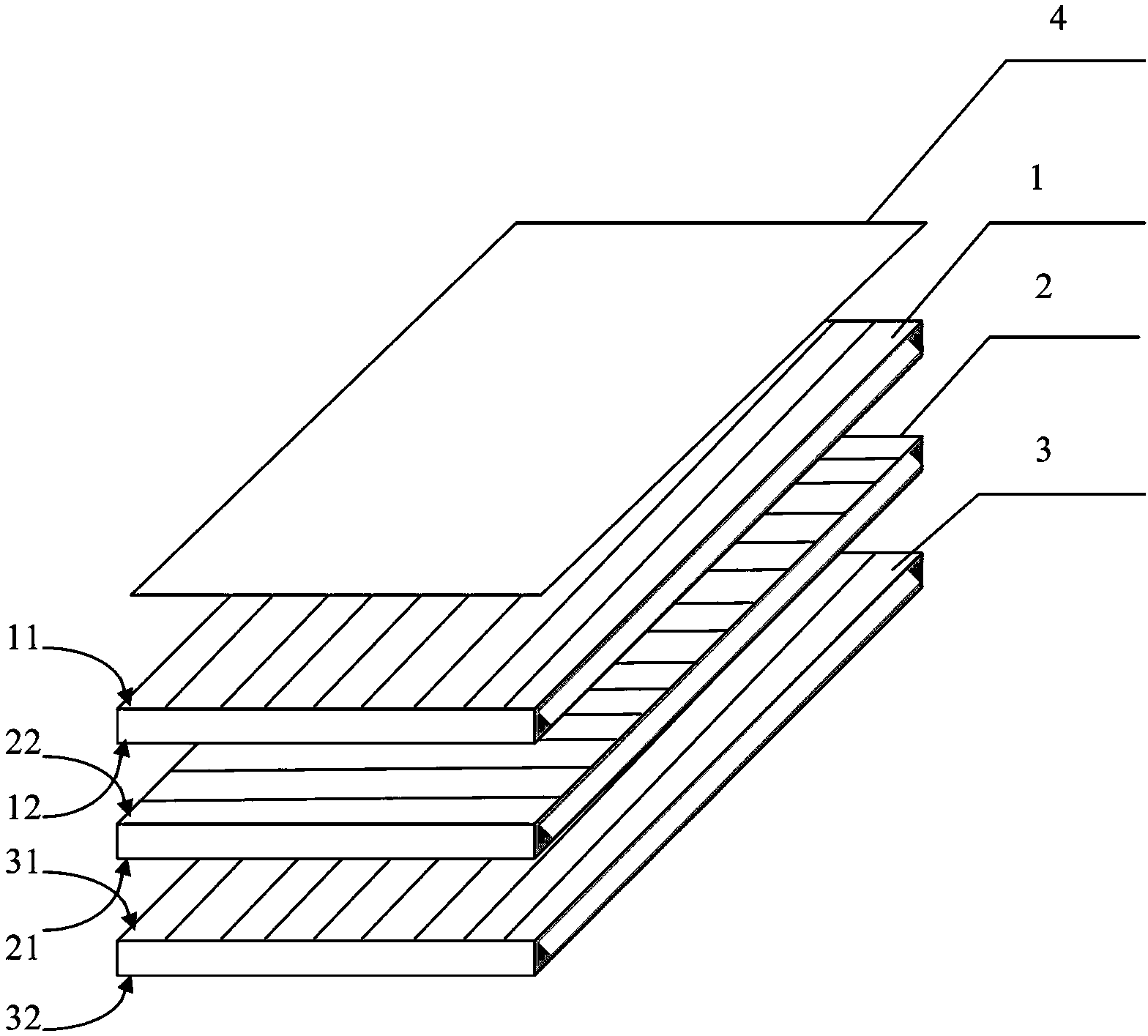Manufacturing method of non-formaldehyde solid wood composite floor using low-density cottonwood veneers as base materials
A technology of solid wood composite flooring and poplar veneer, which is applied to wood processing equipment, manufacturing tools, floors, etc., can solve the problems of high production speed, low density, and large proportion of young wood in poplar, and achieve efficient resource utilization Effects of utilization, enhanced dimensional stability, and efficient value-added utilization
- Summary
- Abstract
- Description
- Claims
- Application Information
AI Technical Summary
Problems solved by technology
Method used
Image
Examples
Embodiment 1
[0055] The present invention utilizes the existing solid wood composite floor processing and production technology and equipment, uses recycled HDPE (high-density polyethylene) plastic as the bonding material, adopts the 0.6mm thick oak veneer veneer technology, and takes the following steps:
[0056] 1. Select poplar logs with a diameter of 15-20 cm. After cooking at a low temperature of 20°C for 30 hours, they are peeled or sliced into poplar veneers (select those with a thickness of 1.5 mm or more), and then dry the veneers to moisture Rate of 15%;
[0057] 2. Cut precious logs into decorative veneer, and place the veneer in the atmosphere to dry naturally to reduce the moisture content to below 25%;
[0058] 3. Separate the recycled plastic into HDPE, crush and clean it, then granulate and blow the scrap into a plastic film;
[0059] 4. Paint the dried poplar veneer with silane coupling agent; the amount of silane coupling agent selected is 10% of the weight of the plastic film,...
Embodiment 2
[0065] In the production, the new HDPE is used as the production material, and the 0.6mm thick oak veneer technology is adopted, and the equipment and steps are similar to those in Example 1.
[0066] Only the recycled plastic described in step 3 in Example 1 is directly purchased for HDPE particle blown film; in step 4 in Example 1, a coating polyurethane coupling agent is used instead, and the coating amount is 1-20% of the weight of the film. For 15 minutes, the remaining steps, equipment and parameters are the same as in Example 1.
Embodiment 3
[0068] In the production, recycled PP is used as the bonding material, and the 2mm thick oak veneer veneer technology is adopted. The equipment and steps are the same as in Example 1, except that the production process parameters are changed, as follows:
[0069] Step 3: Separate the recycled plastic into PP, pulverize and clean, and then granulate and blow the scrap into a plastic film. The other parameters are the same as in Example 1, except that the extrusion temperature is changed to 150-240°C, and the film blowing temperature is changed to 160-250°C;
[0070] Step 5: Assemble the low-density poplar veneer and the plastic film, and obtain the poplar substrate through hot pressing and shaping. Other parameters are the same as in Example 1, except that the hot pressing temperature is changed to 150-220°C;
[0071] Other steps, equipment and process parameters are the same as in Example 1.
PUM
| Property | Measurement | Unit |
|---|---|---|
| melting point | aaaaa | aaaaa |
| thickness | aaaaa | aaaaa |
Abstract
Description
Claims
Application Information
 Login to View More
Login to View More - R&D
- Intellectual Property
- Life Sciences
- Materials
- Tech Scout
- Unparalleled Data Quality
- Higher Quality Content
- 60% Fewer Hallucinations
Browse by: Latest US Patents, China's latest patents, Technical Efficacy Thesaurus, Application Domain, Technology Topic, Popular Technical Reports.
© 2025 PatSnap. All rights reserved.Legal|Privacy policy|Modern Slavery Act Transparency Statement|Sitemap|About US| Contact US: help@patsnap.com

